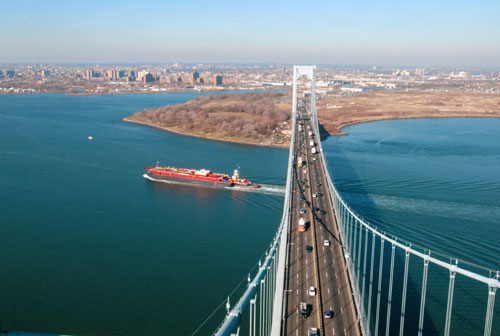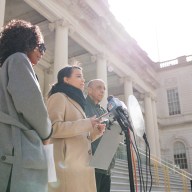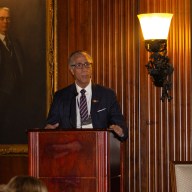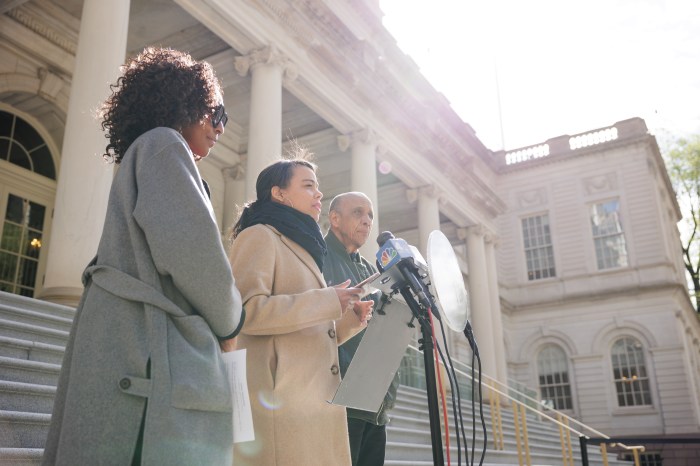It’s no doddering 75-year-old these days, having undergone serious maintenance and celebrating its diamond jubilee.
In fact, the Bronx-Whitestone Bridge has supported 2.2 billion vehicles crossing it since it’s opening on April 29, 1939, the day before the 1939 Worlds Fair opened in Flushing, Queens.
A project of controversial public works developer Robert Moses, who wanted the bridge ready for fair visitors, he pushed construction through in 23 months, according to the Metropolitan Transportation Authority.
“It was meant to make it easier for people from the main land to get over there,” said Bronx Borough Historian Lloyd Ultan.
The project was just one of many of Moses’ projects that connected Long Island to the Bronx and places beyond. Ultan said the bridge helped createe the suburbanization of New York during the Post-World War II “Great Prosperity.”
The Bronx-Whitestone Bridge enabled people to move to Queens, and later Nassau and Suffolk county, said Ultan.
“Queens was relatively empty before then,” he said. “Everyone used mass transit to get around, and to get to the eastern edge of Queens, you need a car.”
But the post-war automobile boom and the new highways made a move to the suburbs easy. It was during that post-war period that older ethnic groups began to leave for the suburbs and new ethnic groups filled in.
“It’s facilitated the demographic shift of the times,” Ultan said about the bridge.
Aside from the big-picture shift, Ultan said the specific placement of the bridge’s outlets also created a unique Korean enclave in the Bronx in the 1980s.
“When Flushing got to be filled and there was no room, the nearest they could get was Soundview,” Ultan said. “It allowed Koreans to live in the Bronx and have connection with relatives in Queens.”
The bridge can also be looked at as an indirect cause of the mass urban project that is Co-op City, said Ultan.
Because the bridge also provided easy access for Bronxites to the 1964 Worlds Fair in Flushing, Ultan said it contributed to an unsuccessful summer at the Freedom Land amusement park. That year the park closed, and soon after Co-op City was built on the site.
But according to Ultan, the bridge also allowed other business to flourish. After bridge opened, the Whitestone drive-in theater was built near the Bronx anchor, which Ultan said was successful for years because of the visibility to its target customers, people with cars.
For better or for worse, the Bronx-Whitestone Bridge undoubtedly changed the borough throughout the past 75 years.
“The Bronx-Whitestone Bridge holds a significant place in New York City history,” said Metropolitan Transportation Authority Chairman and CEO Thomas F. Prendergast. “Since its opening on April 29, 1939, an incredible 2.2 billion vehicles have crossed the span and more than seven decades later it continues to play a vital role in New York City and the entire metropolitan region.”
For those who are curious about what the bridge looked like in days past, images from MTA Bridges and Tunnels Special Archive will be shown in at the Bronx County Historical Society in October.
























